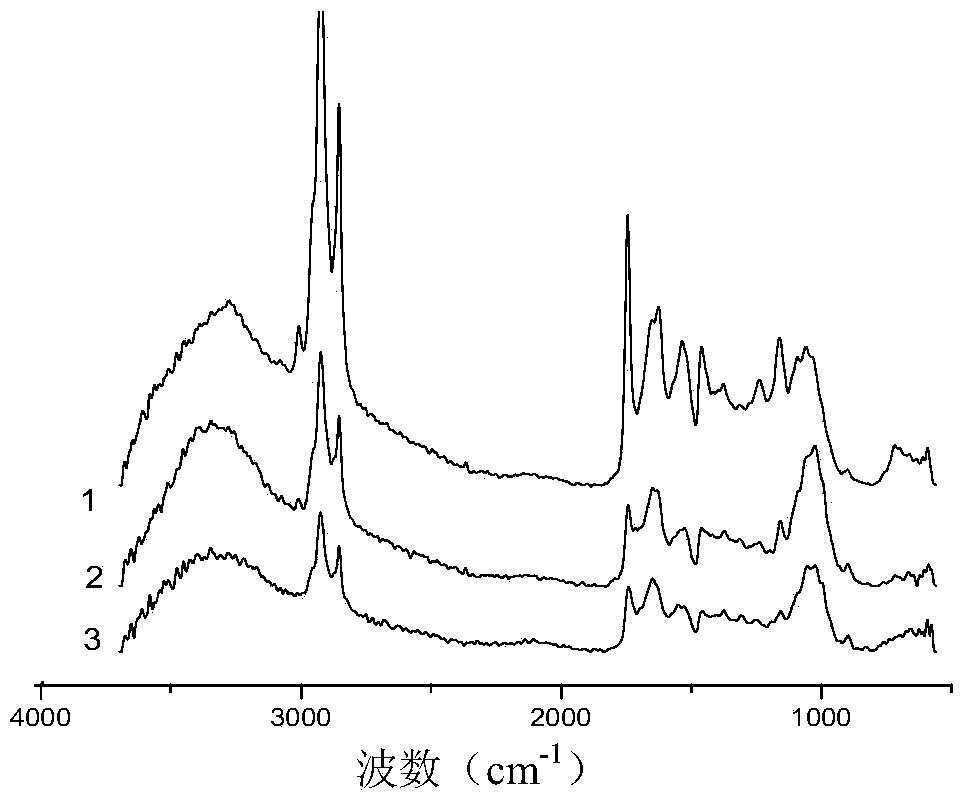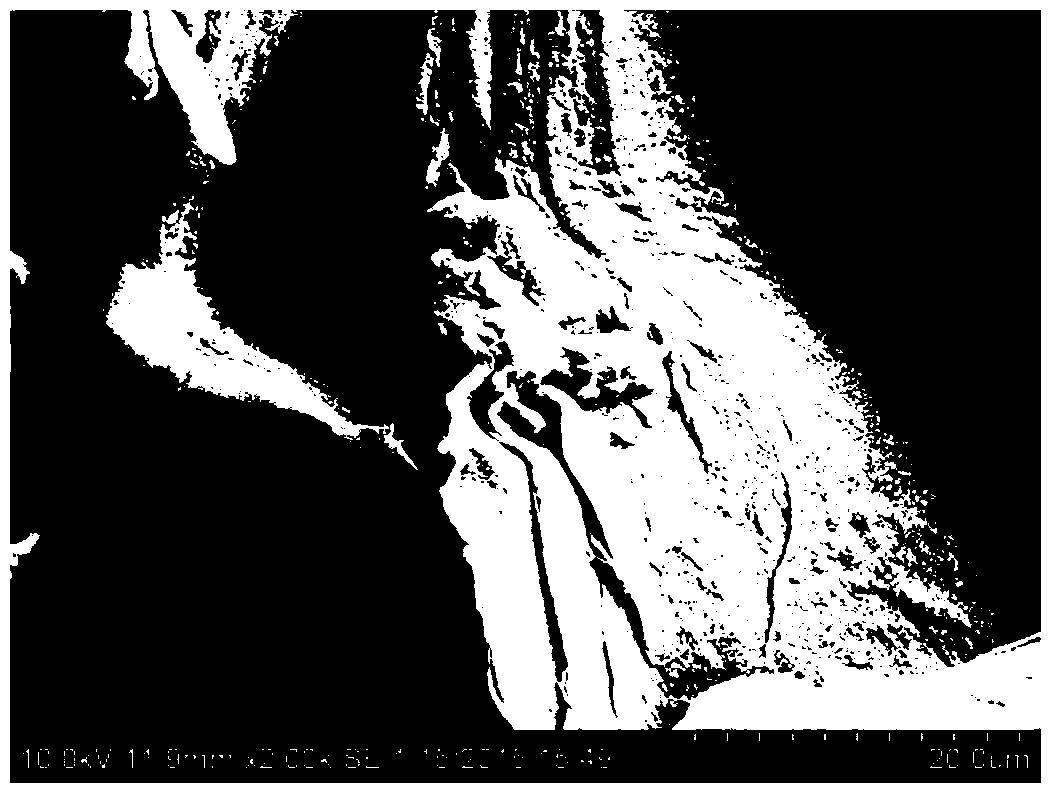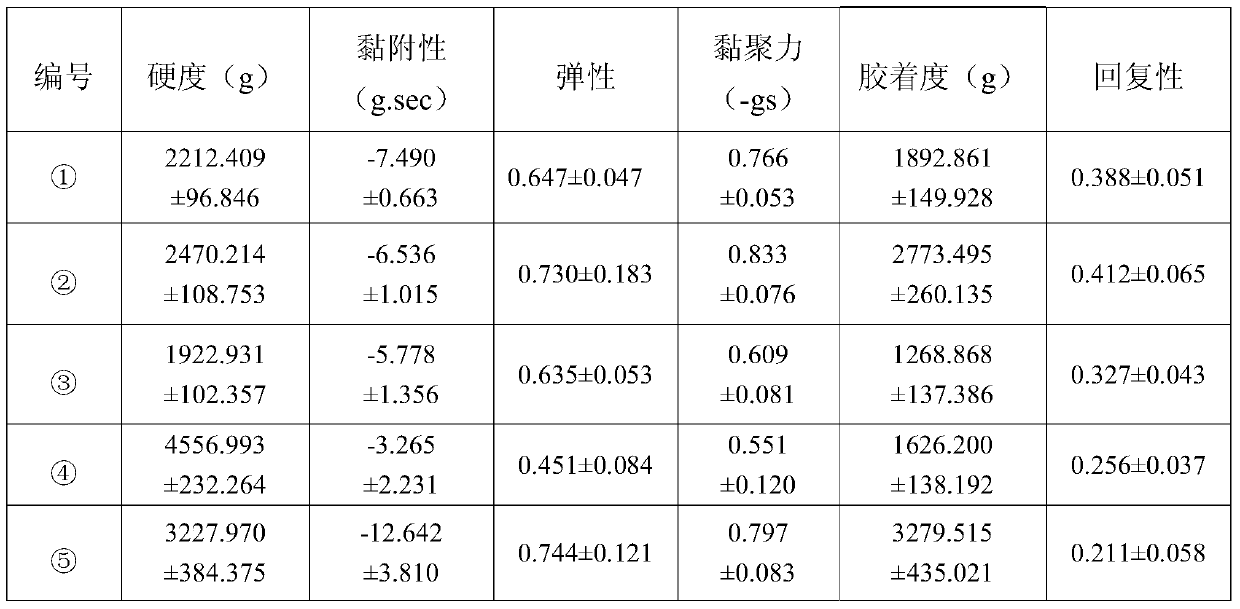Modified hydrogel of pineapple pomace fiber grafted with soybean protein and its preparation method and application
A technology of pineapple peel residue and fiber grafting, which is applied in the fields of medical science, absorbent pads, non-active components of polymer compounds, etc., can solve the problems of insufficient toughness, side reactions, and easy breakage of the glue, and achieve smooth surface and water retention Strong performance and low water permeability
- Summary
- Abstract
- Description
- Claims
- Application Information
AI Technical Summary
Problems solved by technology
Method used
Image
Examples
Embodiment 1
[0038] (1) Extract pineapple pomace cellulose:
[0039] (1-1) Wash the pineapple skin residue to remove the soil residue, add a small amount of water and use a beater to crush and filter initially, elute the water-soluble components such as sugar and pigment, dry the residue in an oven at 50°C for 16 hours, and use a high-speed pulverizer Pulverize further, cross 80 mesh sieves, obtain pineapple peel fibril (RPPF);
[0040] (1-2) Add RPPF to distilled water (the mass volume ratio of distilled water of pineapple skin fibrils is 1g: 20mL), shake on a shaker at 80°C (speed 120r / min) for 2 hours, and use glacial acetic acid with a mass fraction of 13%. Adjust the pH to 3.8, filter, and treat the filter residue with sodium chlorite solution (mass fraction: 7.5%, the mass ratio of leather fibrils and sodium chlorite: 1:2.5) at 75°C for 2 hours, filter, and wash with distilled water for 3 times. After the filtrate was clear in color, it was washed twice with ethanol (95% by volume),...
Embodiment 2
[0048] (1) Extract pineapple pomace cellulose:
[0049] (1-1) Wash the pineapple skin residue to remove the soil residue, add a small amount of water and use a beater to crush and filter initially, elute the water-soluble components such as sugar and pigment, dry the residue in an oven at 50°C for 16 hours, and use a high-speed pulverizer Pulverize further, cross 80 mesh sieves, obtain pineapple peel fibril (RPPF);
[0050] (1-2) Add RPPF to distilled water (the mass volume ratio of distilled water of pineapple skin fibrils is 1g: 15mL), shake the shaker at 80°C (speed 120r / min) for 2h, and use glacial acetic acid with a mass fraction of 13%. Adjust the pH to 3.9, filter, and treat the filter residue with sodium chlorite solution (mass fraction is 7.5%, the mass ratio of skin fibrils and sodium chlorite is 1:2.5) at 75°C for 2 hours, filter, and wash the filter residue with distilled water for 3 hours. After the filtrate was clear in color, it was washed twice with ethanol (9...
Embodiment 3
[0058] (1) Extract pineapple pomace cellulose:
[0059] (1-1) Wash the pineapple skin residue to remove the soil residue, add a small amount of water and use a beater to crush and filter initially, elute the water-soluble components such as sugar and pigment, dry the residue in an oven at 50°C for 16 hours, and use a high-speed pulverizer Pulverize further, cross 80 mesh sieves, obtain pineapple peel fibril (RPPF);
[0060] (1-2) Add RPPF to distilled water (the mass volume ratio of distilled water of pineapple skin fibrils is 1g: 15mL), shake the shaker at 80°C (speed 120r / min) for 2h, and use glacial acetic acid with a mass fraction of 13%. Adjust the pH to 3.8, filter, and treat the filter residue with sodium chlorite solution (mass fraction is 7.5%, the mass ratio of skin fibrils and sodium chlorite is 1:2.5) at 75°C for 2 hours, filter, and wash the filter residue with distilled water for 3 hours. After the filtrate was clear in color, it was washed twice with ethanol (9...
PUM
 Login to View More
Login to View More Abstract
Description
Claims
Application Information
 Login to View More
Login to View More - R&D
- Intellectual Property
- Life Sciences
- Materials
- Tech Scout
- Unparalleled Data Quality
- Higher Quality Content
- 60% Fewer Hallucinations
Browse by: Latest US Patents, China's latest patents, Technical Efficacy Thesaurus, Application Domain, Technology Topic, Popular Technical Reports.
© 2025 PatSnap. All rights reserved.Legal|Privacy policy|Modern Slavery Act Transparency Statement|Sitemap|About US| Contact US: help@patsnap.com



